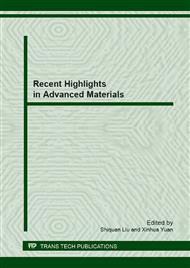p.95
p.101
p.107
p.111
p.116
p.123
p.130
p.137
p.142
Analysis of Prospecting Model of Xiongcun Cu (Au) Deposits Xietongmen County, Tibet
Abstract:
It is one of large copper mine which discoveried newly in the middle of arc-magma-metallogenic belt in Xiongcun Cu (Au) deposits, Xietongmen county, Tibet. In order to analyze deposits model, the methods adopted includes that arrangement of existing geophysical and geochemical exploration results, familiar with the former research results, and based on the collection of data, studying comprehensively the geological characteristics of deposits, discussing the deposits genesis. It found that metal mineral combination about the Cu (Au) ore body is pyrite + chalcopyrite + molybdenite (less) + magnetite (less), and transit to a peripheral area of pyrite + chalcopyrite + magnetite, to sphalerite + chalcopyrite + pyrite + lead ore (less) from inside to outside in porphyries body in Xiongcun by studying, which reflected the rock permeability and diffusion about the hydrothermal system of ore-bearing porphyry, all this caused by different types of mineralization process due to temperature and pressure reduction. Elements in the vertical direction with zoning characteristics, that is Cu, Au, Ag, As, Sb, (Bi) - Co, Ni - Mo - Mn - Ba - Pb, Zn, Cd, Bi, (Sb) from the center to outward. The elements anomalies and combination is the important geochemical markers to find and evaluate this kind of deposits. Xiongcun Cu (Au) deposits belong to low-grade porphyry type Cu (Au) deposits which related to emplaced hornblende quartz diorite late Jurassic, and is series of island arc type porphyry copper metallogenic of the Gangdese terrane subduction. Deficiency is a lack of data, it is very difficult to distinguish which kind of exploration method played a key role, the division includes both the exploration methods and working train of thought, prospecting cognition. One deposits is likely to belong to this category, and may belong to the other because of the mutual cross.
Info:
Periodical:
Pages:
116-122
Citation:
Online since:
September 2013
Authors:
Price:
Сopyright:
© 2014 Trans Tech Publications Ltd. All Rights Reserved
Share:
Citation:


